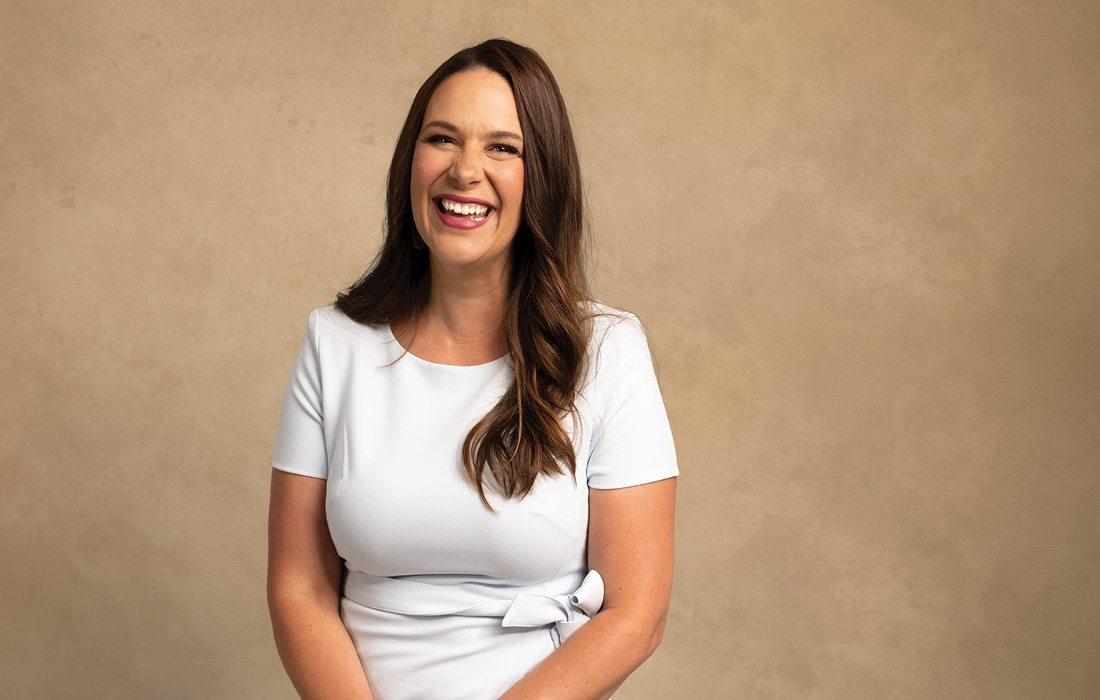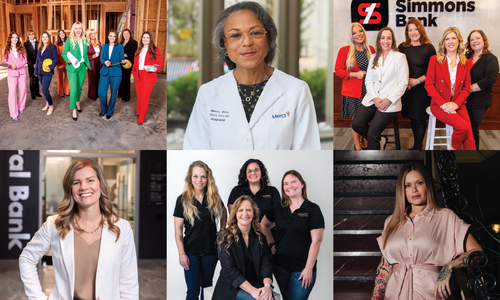
Strategy
How to Work Well Within a Multigenerational Team
Mercy Chief Nursing Officer Marie Moore, 35, shares seven simple and tactical strategies for working with co-workers of all ages.
By Ren Bishop
Sep 13 2023 at 9 a.m.

Marie Moore was 20 years old when she began her nursing career at Mercy. She was a nursing tech on the surgical telemetry floor, working as a nurse assistant at bedside. A few short years later, she accepted her first leadership position at Mercy Springfield Hospital. Now, at 35, she leads a team of more than 2,500 nurses across Southwest Missouri as Chief Nursing Officer.
The self-described “old Millennial” shares her strategies for working and leading well with team members of any age.
PRESENTED BY
1. Learn how to communicate with all generations
When Marie accepted her first leadership position in her mid 20s, she knew she could work well with others as a peer. But as a leader, she had to learn how to communicate effectively with anyone of any age. Email or text, call or conversation, she learned to personalize her interactions – and set boundaries, she says. “Although the hospital runs 24/7, as humans, we have to have down time. So I had to learn how to set some of those boundaries of communication, when maybe you have a generation that doesn’t have the same working or waking hours. I had to work across the team to set boundaries of availability or methods of communication.”
2. Uplift every generation’s strengths
Every age comes with it a unique set of experiences. Instead of creating limiting beliefs or leaning into stereotypes, look for the positives that each generation brings to the table. Baby Boomers have a wealth of knowledge and expertise, and Millennials are able to pivot at a moment’s notice. Make a safe space for both, she says. “Boomers and Gen Z, there’s a paradigm, but we can create a balance together by creating a space where everyone’s experiences are valid and valued.”
3. Invest in multigenerational leaders
At Mercy Springfield Communities, the leadership team is intentionally diverse. Moore is a Millennial executive, working alongside Baby Boomers, Gen X and other Millennials at the C-Suite level. Representation of different generations at the leadership level helps the organization be more responsive to the diverse needs of their co-workers and their patients, says Moore. “When you have an executive level that is multigenerational and you’re appealing to co-workers who are also multigenerational, you’re better able to serve them all, holistically. We learn and lead better, together, when we have different lenses to look through. Leadership that is multigenerational helps build a culture that uplifts a multigenerational workforce.”
4. Celebration leads to innovation
Expertise and experience bring with them a host of resources for any organization. That’s why celebrating different generations and their work milestones can lead to a resilient culture of mutual support. By looking back to learn from the past without judgment, teams can look forward together to innovate for better future outcomes. “There’s so much that Baby Boomers have lived through, especially in healthcare,” she says. “I’m an old Millennial, but we’ve been through a recession and a pandemic, and seen how the market shifted, and now, we’re raising families. When we celebrate each other’s milestones, then we build a community based on trust. That trust is where risk taking happens, and where innovation flourishes.”
5. Develop opportunities for mentorship
Healthy cultures are built on healthy relationships. When you develop strong connections, then you can also develop future leaders. Mentorship, especially across generations, is pivotal to future-proofing an organization. “I intentionally have different people on my team to hear a different perspective,” says Moore. “That diversity of thought and experience has so much wisdom within it. Then, when we add intentional mentorship, we’re able to learn from each other in a safe way, where everyone is valued.”
6. Make room for Gen Z
They’re coming: workers born after 2000. And for organizations like Mercy, they’ve already arrived. Instead of fighting the culture shifts of flexible work and personalized experience, Moore embraces Gen Z and their particular values. “What I appreciate most about Gen Z is the speed of movement in their work and demand for personalization. That ties into the foundational qualities of our mission, vision and values, that we all have a responsibility to care for the unique individual. Gen Z demands that we move quickly to make positive changes, and I appreciate that urgency. We all have to be agile, especially after the pandemic.”
7. Mind your bias
No matter the stereotypes or the memes, Moore encourages anyone to have an open mind when working with and within different generations. Judgment and prejudice, especially with different age groups, can be detrimental to any work – and negatively impact those within it. “Don’t have bias or generationalizations that can box people in,” she says. “When you create a culture where everyone is important, that their individual experiences and thoughts are valued, then we’re better able to build effective teams that are agile and adaptive to the needs of our patients and our community.”













